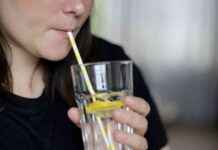Kingfishers fly over rivers in Europe, Africa, America, and Asia. It perches on the branches and watches the riverbeds, until it spots the fish. Then it dives into an open grave to capture them. It never fails. Its accuracy is due to its long, narrow, and streamlined bill, which allows it to enter water with little splash. Japanese engineer Fijian Nakatsu, a fan of ornithology and an engineer, imitated the adorable little bird to create trains that travel more than three hundred kilometers an hour.
BioInspiracion exhibits over 200 objects, models and reproductions, as well as audiovisuals. / RAMON L. PEREZ
This is just one example of how humans have looked to the natural world, which has evolved over 3,800,000,000 years. This is the theme of the Granada Science Park’s summer exhibition. How animals, plants… can provide models that engineering and architecture or science copy to make our lives easier. The dizzying diving of kingfishers. The flamingos move water in both directions. Oder, like Migaloo’s swim with the white whale Migaloo.
The arrow train’s design is reminiscent of the beak of a kingfisher. / RAMON L. PEREZ
It is entitled “BioInspiracion: Innovating from Nature” and has attracted so much attention that two European museums have been established, one in Austria and one in Germany. They will be installing it for three years, until it returns to Granada in 2025.
“It’s a very special day because we’re putting all the meat back on our grills after the pandemic,” Luis Alcala, director of Science Park, said. He stressed that BioInspiracion means returning to the great productions of three years ago, ‘Play. Alcala stated that it is important because it will allow the Granada/Andalusia brand to be used throughout Europe. He also noted that this agreement was reached with museums institutions in Germany and Austria. This allows for a world-class exhibit.
Alcala says that ‘BioInspiracion” leaves a profound message. “We have used nature for our own benefit in the past, with all its consequences. But here, we want to learn from it.” The impressive arborescent columns were designed by Antonio Gaudi, a genius in modernism. They are also known as the human Femur or the Sagrada Familia masterpiece. These columns were used as a reference for the Eiffel Tower in Paris.
Exhibition details. / RAMON L. PEREZ
BioInspiracion will offer visitors the opportunity to experience all this on a 1,700 square meter area with objects, models, audiovisual elements, and ‘creatures’ as unique as Theo Jansen’s Animaris ordis. The ‘beach animals series’ includes a kinetic sculpture made mostly of PVC pipes. Amazing beast that moves with the wind. It was one the highlights of Monday’s opening ceremony.
The flamingo is a great inspiration for turbine design. / RAMON L. PEREZ
Ernesto Paramo is the curator of “BioInspiracion”, and was also the Science Park’s director for over twenty years. He recalled that he was 8 years old when he was fascinated by the way mussels held onto rocks and how many birds could fly in the same area without colliding. Or how termites made ‘buildings’ larger than they were. Paramo stated, “This is the greatest objective of science museums. To transform wonder into knowledge.”
He stressed in this context that “BioInspiracion” is not just a look back at the past but also a look forward to the present and future. “Our young people will work in biomimicry, as they do in other disciplines like artificial intelligence.” Ernesto Paramo highlighted the high number of collaborators in ‘BioInspiracion, 138 total. These include companies like Festo and aeronautics Airbus, as well as robotics companies like Alucoat, which is based in Linares.
How is BioInspiracion structured? It can be divided into six main areas. The first, titled “Imitating Nature”, examines the evolution of the environment from Antiquity through the 20th century. The second is a biomimicry approach and the third is how technology is related to it in areas like transport, materials, packaging and health. The fourth question is “Towards a Biomimetic Future?” The fifth is education workshops. The sixth is known as ‘Frato’s look’.
Ernesto Paramo is the curator of this exhibition. / RAMON L. PEREZ
Alejandro Cardenete the Minister of Education stated that BioInspiracion “is part and parcel of the normality of the Parque de las Ciencias.” According to Cardenete, the normality is clearly outlined in the last week’s report to the Board. Cardenete says that the Park is more than an emblem of Andalusia in foreign countries. It is also a major tourist attraction and cultural attraction for Granada. And, most importantly, it inspires new generations with its research. It is simply amazing to see the Science Park in 2022. There are already over 400,000 visits to the Science Park. The pre-pandemic numbers could rise if this trend continues. A large part of the influx can be attributed to the organization more than 200 activities.
Here are more details about the exhibition. / RAMON L. PEREZ
Cardenete believes that the pandemic caused the true turn of the century in areas such as digitization and acceleration in the transition to an energy model. This aspect has had a strong influence on the war in Ukraine as well as the rise in fuel prices that has caused inflation not to be contained. Alejandro Cardenete concluded that the environment is what determines decision-making.








